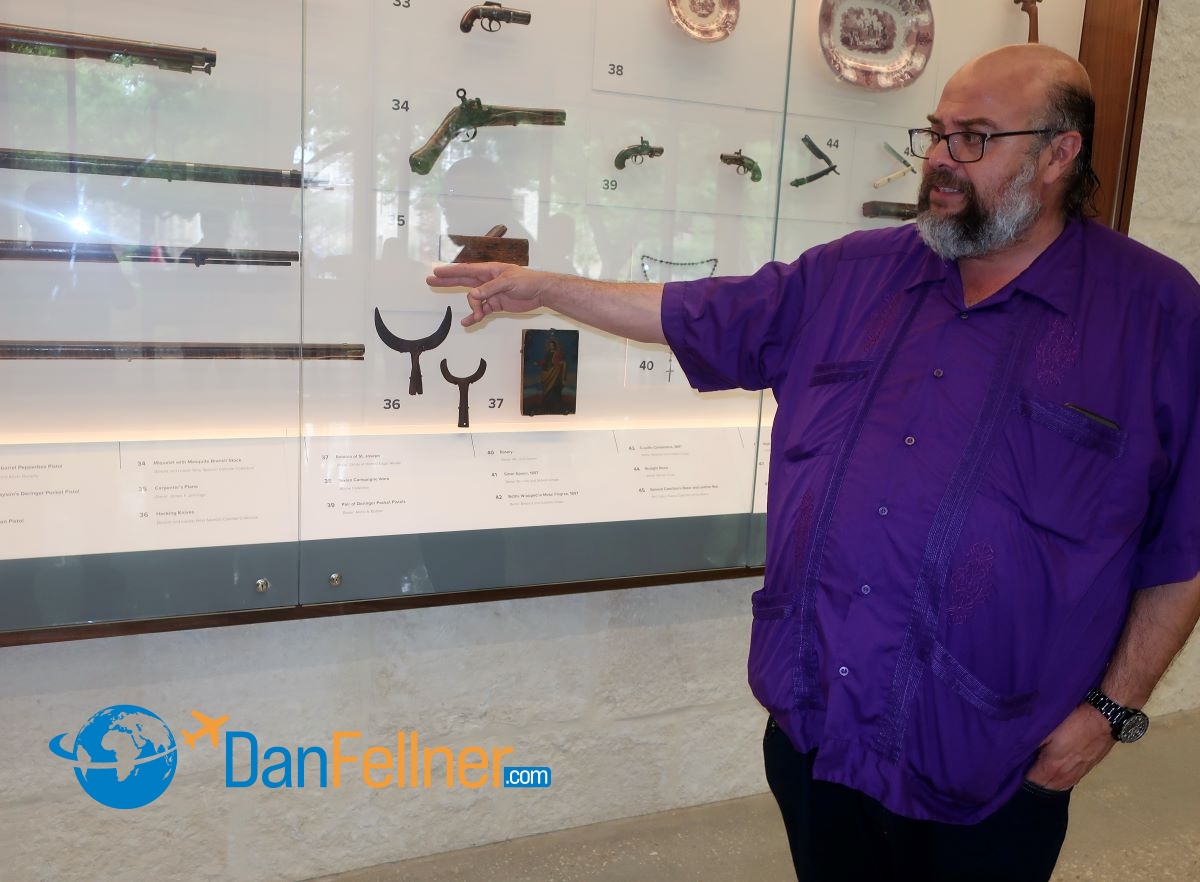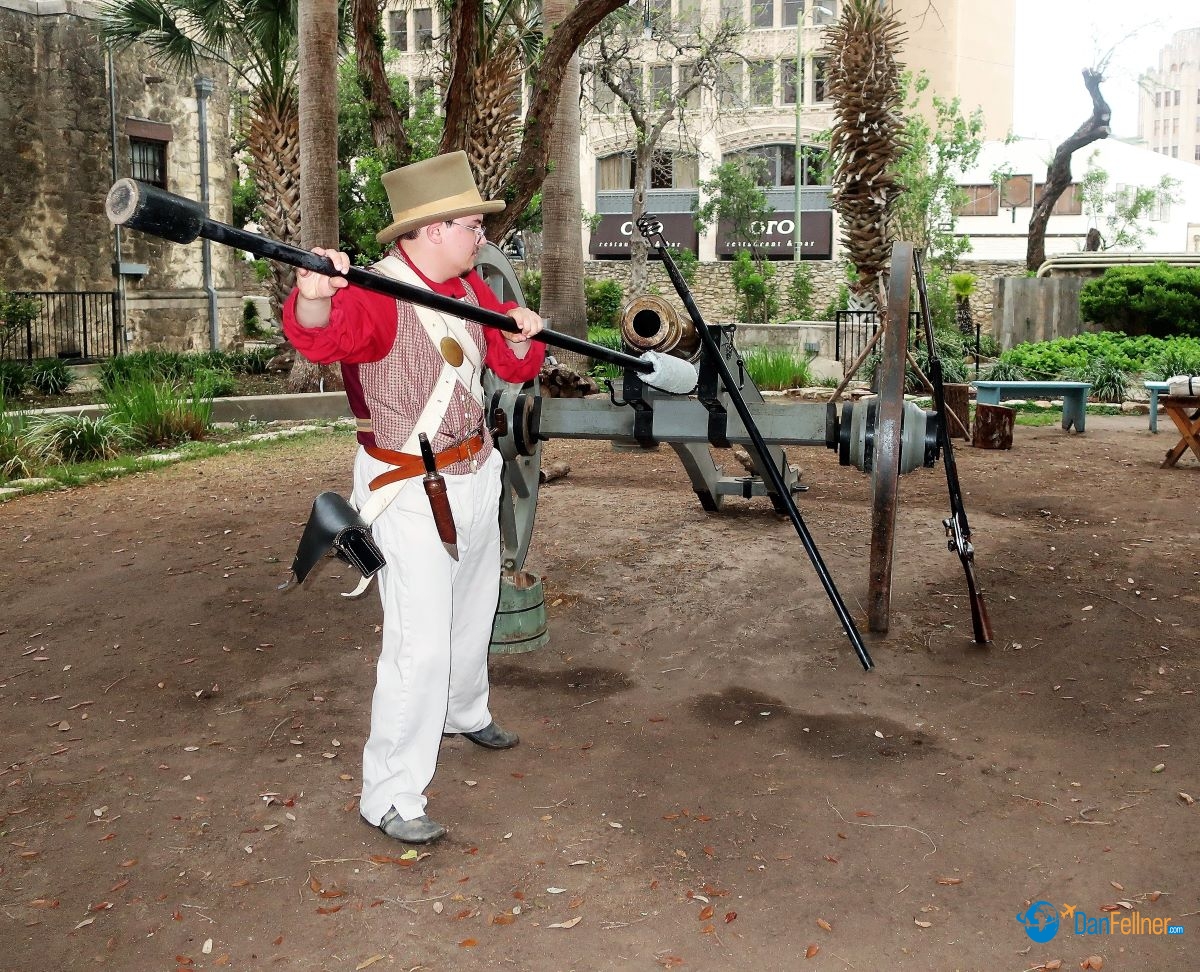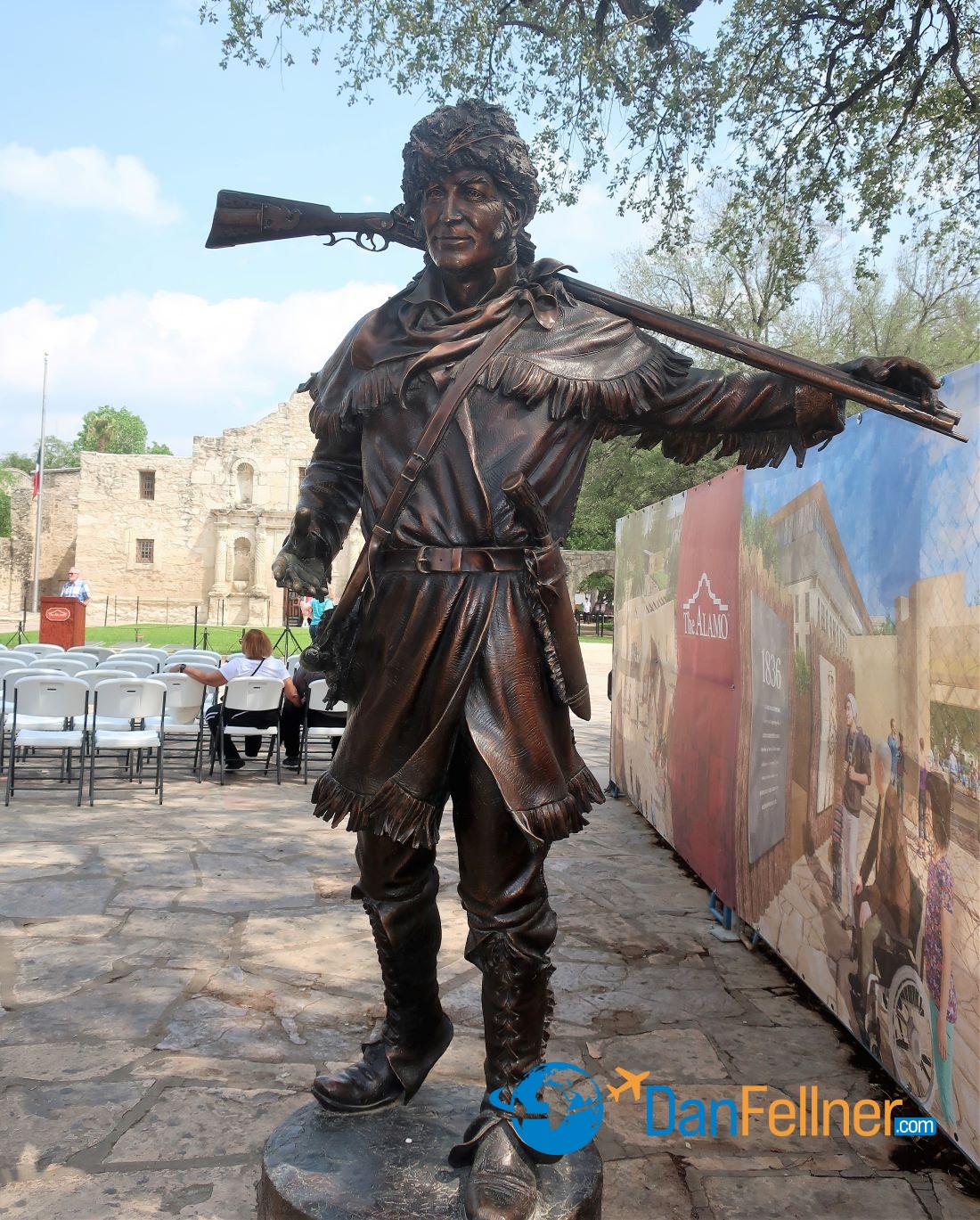British rock star donates prized collection of artifacts to San Antonio museum
The Arizona Republic — April 16, 2023
SAN ANTONIO – Davy Crockett would be proud.
Remembering the Alamo, including the bravery of the American frontiersman and folk hero along with the other men who fought and died here in 1836, and understanding the site’s nuanced history, is now easier than ever for the 1.6 million people each year who visit Texas’ most popular tourist attraction.

A musket-firing demonstration by members of the Alamo’s Living History staff is presented twice a day Fridays through Sundays at the Alamo Plaza in downtown San Antonio.
In March, the Alamo opened the first building constructed on the site since the 1950s — a $20 million, two-story 24,000-square-foot museum called the Ralston Family Collections Center.
Located directly behind the iconic Alamo Church, the building is named after a San Antonio family that donated $11.4 million to the Alamo. It houses about 500 artifacts, many of which had been kept in storage because there wasn’t the space to put them on public display.

The new Ralston Family Collections Center is the first building constructed on the Alamo grounds since the 1950s. It houses about 500 Alamo artifacts, including the Phil Collins Collection.
About 50 of the items, including a rifle Crockett owned and a sword used by Mexican Gen. Antonio Lopez de Santa Anna, are part of the Phil Collins Collection.
Yes, that Phil Collins.

British rock star Phil Collins donated his personal collection of Texas Revolution artifacts to the Alamo in San Antonio, some of which are on display at the new Ralston Family Collections Center.
Turns out, the acclaimed British rock star who has sold more than 150 million albums has had a lifelong passion about the Alamo and amassed one of the world’s preeminent collections related to the Texas Revolution. He donated his collection to the Alamo in 2014, with the stipulation that it be shown to the public, a request that finally came to fruition with the opening of the collection center.
“His love of the Alamo started as a young boy in 1955 watching ‘Davy Crockett’ on television,” says Ernesto Rodriguez, the Alamo’s senior curator and historian, who has known the former Genesis frontman for nearly 20 years. “And it grew with the John Wayne movie (1960’s ‘The Alamo’) and continued to grow as he did more research.

A sword and scabbard used by Mexican Gen. Antonio Lopez de Santa Anna on display at the Ralston Family Collections Center in San Antonio. The items were donated to the Alamo by British rock star Phil Collins.
“It’s amazing that a young boy from England fell in love with a story that happened thousands of miles away. It’s the idea that all history is connected. It affected him the same way it affects a Texan today.”
My visit to the Alamo — and four other historic Spanish colonial missions along the San Antonio River — was the most memorable part of a recent four-day trip to this city of about 1.5 million people that is a colorful blend of Texan and Mexican culture.
The Alamo is in the heart of downtown San Antonio, just a block from the city’s famed River Walk, a 15-mile urban waterway, stretches of which are lined with restaurants, bars and shops.

San Antonio’s famed River Walk is just a short walk from the Alamo.
Founded in 1718 by Spanish missionaries and originally called Mission San Antonio de Valero, the Alamo became the site of a pivotal battle of the Texas Revolution in 1836. Following a 13-day siege, Mexican troops led by Santa Anna captured the Alamo. All 189 defenders — including Crockett and Alamo co-commanders Jim Bowie and William Travis — were killed. More than 1,000 Mexican soldiers died in the battle.
Using “Remember the Alamo” as their battle cry, the Texian Army under Sam Houston defeated Santa Anna six weeks later in the Battle of San Jacinto, leading to the Republic of Texas’ independence from Mexico. Texas became the 28th U.S. state in 1845.

A buckskin vest worn by Davy Crockett on display at the Alamo’s new Ralston Family Collections Center. Crockett died defending the Alamo in 1836.
According to a sign greeting visitors to the site, “The Battle of the Alamo stands as a symbol of freedom throughout the world.”
The remains of Crockett, Bowie, Travis and others are believed by some to be entombed in a marble coffin at the entrance to San Antonio’s oldest church — San Fernando Cathedral — founded in 1731. The church is about a 15-minute walk from the Alamo and faces the city’s main plaza.

Built in 1731, Mission Concepción is the oldest unrestored stone church in America. It is one of five Spanish missions along the San Antonio River that comprises Texas’ only UNESCO World Heritage Site.
The Alamo is one of five Spanish missions that comprise Texas’ only UNESCO World Heritage Site. To see them all, we rented bikes for a 17-mile round-trip ride on a path crisscrossing the San Antonio River south of the city.
The missions — Espada, San Juan, San Jose and Concepcion — were founded in the early 1700s. They are each about 2 miles apart and represent the largest concentration of Spanish colonial missions in North America.
Unlike the Alamo, the other four missions still function as working Catholic parish churches. It took us about four hours — including brief stops at each mission — to complete the circuit and return to downtown San Antonio.

Cyclists explore the grounds of the Mission San Juan, one of five historic Spanish missions near the San Antonio River.
Even with the opening of the Ralston Center, the Alamo only has space to display about 10 percent of its artifacts. That is scheduled to change in 2026, when a new visitor center and museum will open across the street from the Alamo Church, part of a $388 million redevelopment plan that is a partnership among the city, the Alamo Trust and the Texas General Land Office.
When the visitor center opens in three years, it will house the Phil Collins Collection and other items now on display in the Ralston Center, which will then be used to showcase rotating exhibits focused on specific aspects of Alamo history.

Ernesto Rodriguez, senior curator and historian at the Alamo in San Antonio, discusses some of the 500 artifacts on display at the new Ralston Family Collections Center.
Rodriguez, who calls the Ralston Center “an appetizer for the main course,” says the visitor center will enable the site to more fully tell the story of not just the soldiers who fought in the battle but also the history of the Indigenous peoples living in the area, slavery and the civil-rights movement in south Texas.
“The Alamo story spans millennia,” he says. “It just so happens that most people learn about the site through the battle in 1836. Our job is to tell every part of the story — the good, bad and the ugly. We’re not shying away from anything.”

A guide at the Alamo’s Living History Encampment demonstrates how a cannon was loaded during the 1836 Battle of the Alamo.
It’s free to wander around the Alamo’s 4-acre site, although a timed-entry reservation is required to go inside the church. Tickets cost $14 for adults to enter the Ralston Center and see the Phil Collins Collection.
For visitors, it’s a chance to learn about one of history’s most famous battles through the artifacts collected and donated by a most unlikely source — someone known far more for his knowledge of music than muskets and munitions.

The ashes of Davy Crockett, Jim Bowie and William Travis who died in the 1836 Battle of the Alamo, are believed by some to be entombed in a marble coffin at the entrance to San Fernando Cathedral.
“He is a sincere scholar and enthusiast who wants to tell people everything he knows about the Alamo,” says Rodriguez of Collins. “He loves the site and we love the fact that he loves the site. He brings the story to life in a different way than we do. If you have someone of his stature talk about the Alamo, people listen.”
Websites for more info:
*The Alamo: https://thealamo.org.
*Visit San Antonio: https://visitsanantonio.com.

Frontiersman Davy Crockett died at the Alamo in 1836.
© 2023 Dan Fellner



